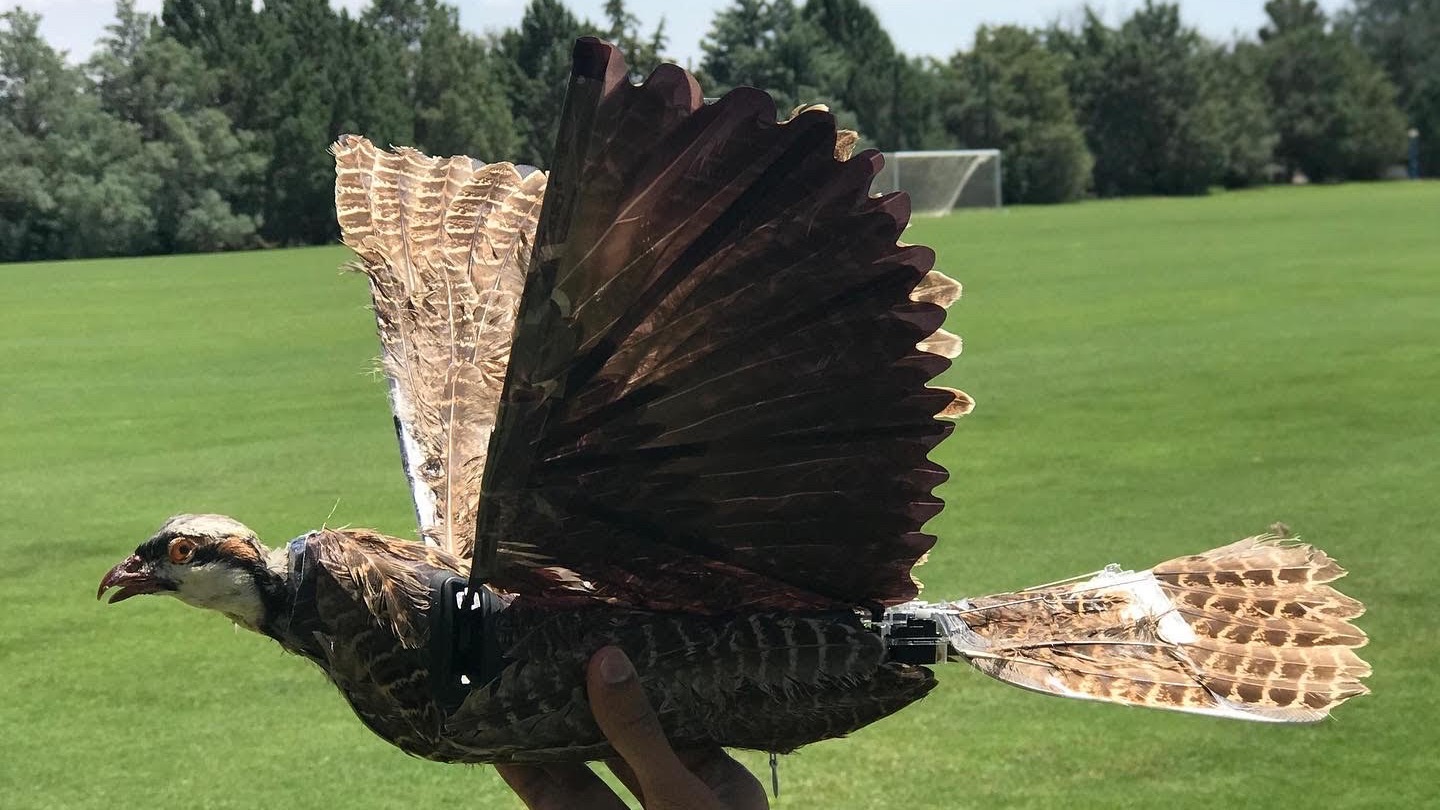Taxidermy birds are being turned into drones
Scientists are turning dead birds into drones to study aerodynamics.

Dead birds are getting a second chance at flying by being transformed into drones.
Researchers think that by creating avian drones using taxidermy birds, they can not only learn about flight but eventually use the drones to monitor wildlife.
"I originally got the idea to do this in 2011, but when I tried making [a bird drone] using artificial materials, I found that the wings weren't as efficient as real birds wings since they weren't flapping at the same angle," Mostafa Hassanalian, an associate professor of mechanical engineering at the New Mexico Institute of Mining and Technology who led the project, told Live Science. "Flexibility of the wings is important, since they create lift and thrust."
When a bird flaps its wings downward, it causes it to lift; when it flaps its wings upward, it causes thrust, propelling the bird forward.
"Actual bird wings also contain bones," Hassanalian said. "We've found that artificial materials don't have the same efficiency."
Related: Juvenile bird accidentally breaks record for longest non-stop flight on its first attempt
Through trial and error, the researchers learned that this experiment could work only with real bird wings, so the team obtained materials from web retailers such as Amazon and Etsy, which sell bird wings, and also acquired whole birds from taxidermists. Then, they attached parts of the taxidermy birds to electric motors.
Get the world’s most fascinating discoveries delivered straight to your inbox.
"We never hurt any birds while working on this project," Hassanalian said. "We want to help nature, not hurt nature."
By using real wings, the researchers "could reverse engineer the birds," Hassanalian said. Through their experiments, they've gotten a better understanding of how birds conserve energy in flight, such as by flying in V-shaped patterns; they think this information could eventually be applied to the aviation industry and help with saving energy and fuel.
In agreement with earlier research, "we discovered that when birds are flying in a flock, those in the middle section preserve their energy more than in the front," Hassanalian said. "Their efficiency improved by 44%."
So far, the researchers have tested their taxidermy bird models inside cages in the lab as well as around campus. Right now the avian drones can sustain up to 20 minutes of flight; the team uses computer software to simulate wings' flapping motion.
"The technology we're developing will let us fly with the flock," Hassanalian said.
Currently, scientists worldwide use nonbird drones to monitor wildlife, but in many cases, these helicopter-looking devices can spook the animals. However, Hassanalian is hopeful that his team's more lifelike and quieter drone will "blend in" with its surroundings.
"The biggest challenge we have now is that we don't know how living birds will react," Hassanalian said.
The team presented their research at the American Institute of Aeronautics and Astronautics SciTech 2023 Forum earlier this year.
Jennifer Nalewicki is former Live Science staff writer and Salt Lake City-based journalist whose work has been featured in The New York Times, Smithsonian Magazine, Scientific American, Popular Mechanics and more. She covers several science topics from planet Earth to paleontology and archaeology to health and culture. Prior to freelancing, Jennifer held an Editor role at Time Inc. Jennifer has a bachelor's degree in Journalism from The University of Texas at Austin.


